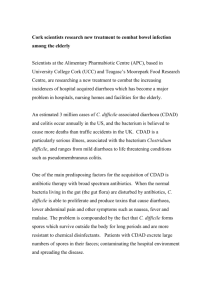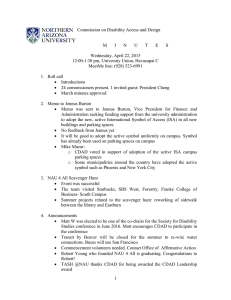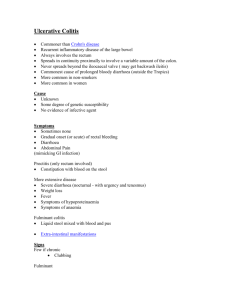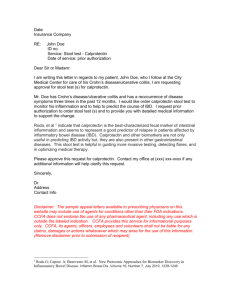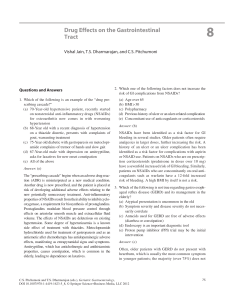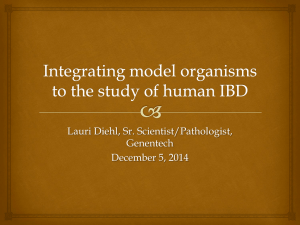Clostridium difficile Questions and Answers
advertisement
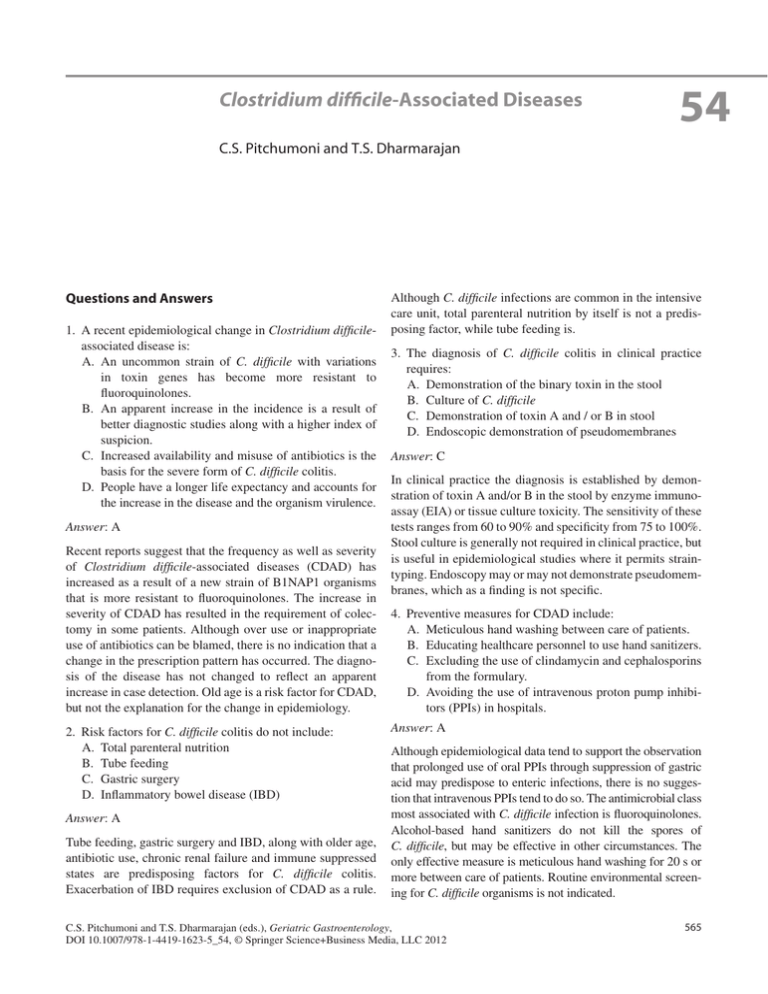
Clostridium difficile-Associated Diseases 54 C.S. Pitchumoni and T.S. Dharmarajan Questions and Answers 1. A recent epidemiological change in Clostridium difficileassociated disease is: A.An uncommon strain of C. difficile with variations in toxin genes has become more resistant to fluoroquinolones. B.An apparent increase in the incidence is a result of better diagnostic studies along with a higher index of suspicion. C.Increased availability and misuse of antibiotics is the basis for the severe form of C. difficile colitis. D.People have a longer life expectancy and accounts for the increase in the disease and the organism virulence. Answer: A Recent reports suggest that the frequency as well as severity of Clostridium difficile-associated diseases (CDAD) has increased as a result of a new strain of B1NAP1 organisms that is more resistant to fluoroquinolones. The increase in severity of CDAD has resulted in the requirement of colectomy in some patients. Although over use or inappropriate use of antibiotics can be blamed, there is no indication that a change in the prescription pattern has occurred. The diagnosis of the disease has not changed to reflect an apparent increase in case detection. Old age is a risk factor for CDAD, but not the explanation for the change in epidemiology. 2. Risk factors for C. difficile colitis do not include: A. Total parenteral nutrition B. Tube feeding C. Gastric surgery D. Inflammatory bowel disease (IBD) Answer: A Tube feeding, gastric surgery and IBD, along with older age, antibiotic use, chronic renal failure and immune suppressed states are predisposing factors for C. difficile colitis. Exacerbation of IBD requires exclusion of CDAD as a rule. Although C. difficile infections are common in the intensive care unit, total parenteral nutrition by itself is not a predisposing factor, while tube feeding is. 3. The diagnosis of C. difficile colitis in clinical practice requires: A. Demonstration of the binary toxin in the stool B. Culture of C. difficile C. Demonstration of toxin A and / or B in stool D. Endoscopic demonstration of pseudomembranes Answer: C In clinical practice the diagnosis is established by demonstration of toxin A and/or B in the stool by enzyme immunoassay (EIA) or tissue culture toxicity. The sensitivity of these tests ranges from 60 to 90% and specificity from 75 to 100%. Stool culture is generally not required in clinical practice, but is useful in epidemiological studies where it permits straintyping. Endoscopy may or may not demonstrate pseudomembranes, which as a finding is not specific. 4. Preventive measures for CDAD include: A. Meticulous hand washing between care of patients. B.Educating healthcare personnel to use hand sanitizers. C.Excluding the use of clindamycin and cephalosporins from the formulary. D.Avoiding the use of intravenous proton pump inhibitors (PPIs) in hospitals. Answer: A Although epidemiological data tend to support the observation that prolonged use of oral PPIs through suppression of gastric acid may predispose to enteric infections, there is no suggestion that intravenous PPIs tend to do so. The antimicrobial class most associated with C. difficile infection is fluoroquinolones. Alcohol-based hand sanitizers do not kill the spores of C. difficile, but may be effective in other circumstances. The only effective measure is meticulous hand washing for 20 s or more between care of patients. Routine environmental screening for C. difficile organisms is not indicated. C.S. Pitchumoni and T.S. Dharmarajan (eds.), Geriatric Gastroenterology, DOI 10.1007/978-1-4419-1623-5_54, © Springer Science+Business Media, LLC 2012 565
